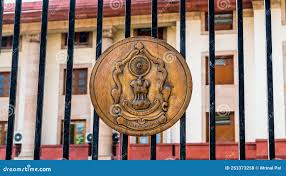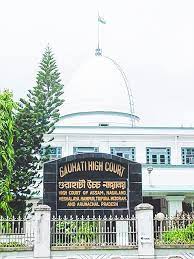(A) Juvenile Justice (Care and Protection of Children) Act, 2015 Section 14(3, 15 – Juvenile Justice – Preliminary assessment time limit – Mandatory or Directory – This case examines whether the three-month time limit for completing a preliminary assessment under Section 14(3) of the JJ Act is mandatory or directory.
The Court considers the scheme of the Act, the consequences of non-compliance in other sections, and relevant case law on interpreting time limits in statutes. The Court concludes that the time limit in Section 14(3) is directory, not mandatory. However, the Court emphasizes the importance of completing preliminary assessments expeditiously and provides guidance for extending the time limit.(Para 9.5-9.20)
(B)Juvenile Justice (Care and Protection of Children) Act, 2015 – High Court Revisional Power – Maintainability – Remedy of Appeal – This case deals with the maintainability of a revision petition filed before the High Court under the JJ Act. The issue arose when the Board continued proceedings against a Child in Conflict with Law (CCL) despite a final order by the Principal Magistrate directing trial by the Children’s Court.
The Court clarifies that even though a remedy of appeal was available against the Board’s order, the High Court’s revisional power under Section 102 of the JJ Act can be invoked due to the illegality and impropriety of the Board’s actions. The Court highlights the absence of a time limit for filing revisions under Section 102 and its broad scope for ensuring the legality and propriety of orders passed by the Board or Children’s Court.(Para 10.2, 10.3, 10.4)
(C) Juvenile Justice (Care and Protection of Children) Act, 2015 – Section 10, 102 – “Children’s Court” vs. “Court of Sessions” – Anomaly – Appeal – Time Limit – Second Appeal – The Supreme Court identifies inconsistencies in the JJ Act regarding the terms “Children’s Court” and “Court of Sessions” when referring to appellate authorities.
The Supreme Court clarifies that “Children’s Court” and “Court of Sessions” should be read interchangeably when determining the appropriate appellate forum, with Children’s Court taking precedence if available. The Court recognizes the omission of a time limit for appeals under Section 101(2) and sets a 30-day limit with provisions for condonation of delay based on Section 101(1). The Court acknowledges potential anomalies regarding second appeals under Section 101(4) and Section 102 but leaves a detailed examination for a future case. (Para 11to 14)
(D) Juvenile Justice (Care and Protection of Children) Act, 2015 – Section 7 – Juvenile Justice Board Order – Dissent – Principal Magistrate – Majority Opinion – The Supreme Court clarifies the procedure for final orders by the Board under Section 7 of the JJ Act.
- A majority opinion is required for final disposal or orders under Section 18(3). In the absence of a majority, the Principal Magistrate’s opinion prevails.
- A dissenting opinion without detailed reasons by another member does not invalidate the Principal Magistrate’s order signed on behalf of the Board.
- Once a final order is passed by the Principal Magistrate, further proceedings by the Board become void. Para 15.4, 15.5, 15.6 )
(E) Juvenile Justice (Care and Protection of Children) Act, 2015 – Section 15 – Juvenile Justice Board Order – Right to appeal – Non consideration of arguments while issuing order – Appelants had right to appeal – The Child in Conflict with Law can exercise his right of appeal against order passed by the Board within 10 days and appeal, if any filed, shall be decided by the appellate authority within two months thereafter. (Para 16.1, 16.2)
(F) Practice and Procedure – Quasi-Judicial Proceedings – Failure to mention name of officer signing order – A prevalent issue in judicial and quasi-judicial proceedings nationwide. Often, the Presiding Officers, Board Members, or Tribunal officials fail to mention their names when issuing orders. This omission poses challenges in identifying the responsible authority later on, especially if multiple officers share the same name.
While judicial officers have unique identification numbers, this practice is not universal. Therefore, we advocate for a standardized approach. In all orders, including interim ones, issued by Courts, Tribunals, Boards, and quasi-judicial authorities, it is imperative to explicitly mention the names of the Presiding Officers or Members when signed. Additionally, where applicable, their identification numbers should also be included to facilitate clarity and accountability. (Para 17.1, 17.2)
SUPREME COURT OF INDIA
2024 STPL(Web) 336 SC
[2024 INSC 387]
Child In Conflict With Law Through His Mother Vs. State Of Karnataka And Another
Criminal Appeal No. of 2024 (Arising out of Special Leave Petition (Crl.) No. 3033 of 2024)-Decided on
07-05-2024
https://stpllaw.in/wp-content/uploads/2024/05/2024-STPLWeb-336-SC-1.pdf







